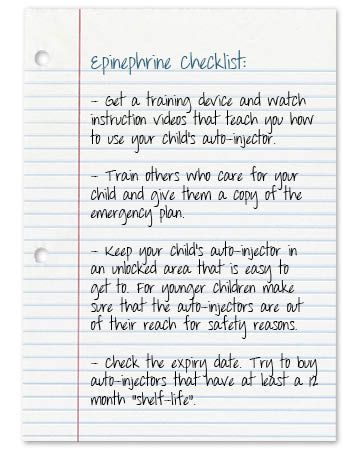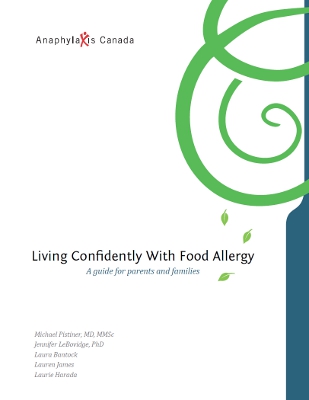Epinephrine is safe to use in normally healthy individuals. It rarely causes harm, even if given when not needed. Possible side effects can include rapid heart rate, paleness, dizziness, weakness, tremors and headache.4 These side effects are generally mild and go away within a few minutes.4
- Even if epinephrine has been given, your child still needs to go to the hospital for observation by medical professionals because your child may need further treatment.
- Many parents worry they might mistake anaphylaxis for an asthma attack. Epinephrine can be used to treat the symptoms of an anaphylactic reaction and an asthma attack. In the past, epinephrine was used to treat asthma attacks before modern asthma medications were available. Discuss this with your doctor.
- Give other medications, such as asthma drugs and antihistamines after giving epinephrine.
- Keep in mind that antihistamines are slow to act and have not been proven to stop anaphylaxis.

- Keep your child’s auto-injector at room temperature (59-86F/15-30C)
- Do not store it in a car or a fridge.
- In the case of cold weather, keep it inside your child’s coat. In hot weather, keep it in the shade.
Sign up for expiration notifications on pharamceutical websites
2. National Institute of Allergy and Infectious Disease (NIAID)-Sponsored Expert Panel. “Guidelines for the Diagnosis and Management of Food Allergy in the United States: Report of the NIAID-Sponsored Expert Panel.” The Journal of Allergy and Clinical Immunology 126.6 (2010): S1-S58.
3. Sampson, H.A. et. al. “Second symposium on the definition and management of anaphylaxis: Summary report—Second National Institute of Allergy and Infectious Disease/Food Allergy and Anaphylaxis Network symposium.” The Journal of Allergy and Clinical Immunology 117.2 (2006): 391-397.
4. Canadian Society of Allergy and Clinical Immunology. Anaphylaxis in School & Other Settings. 2nd Ed. Revised. 2011.
